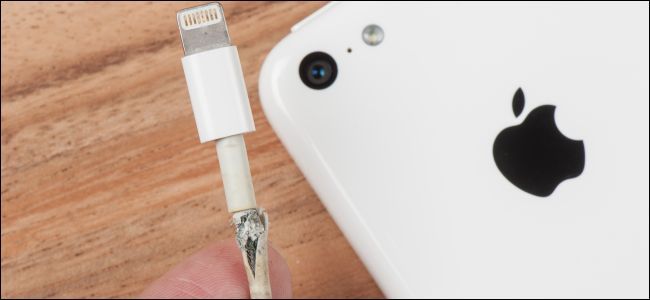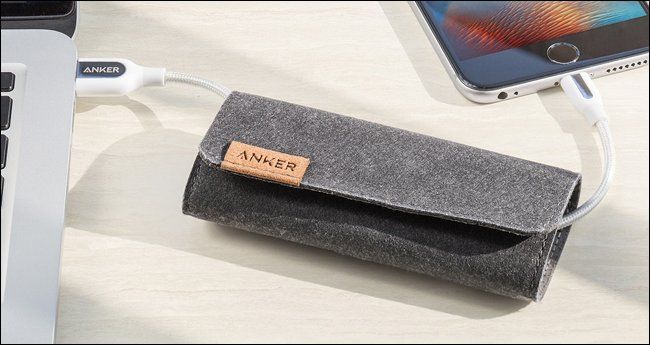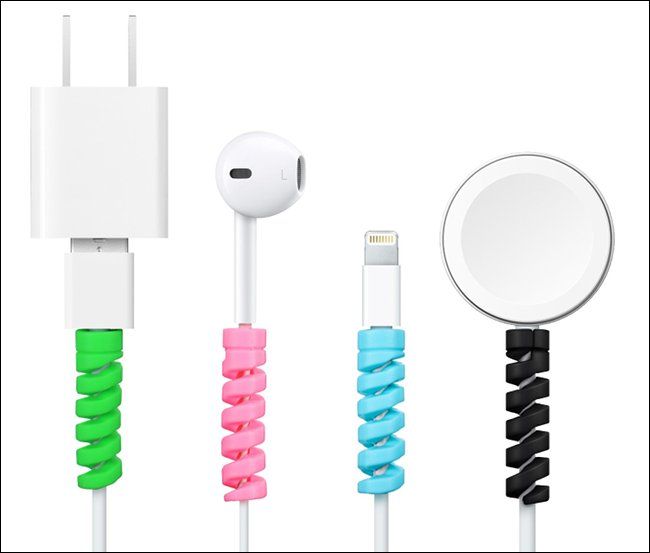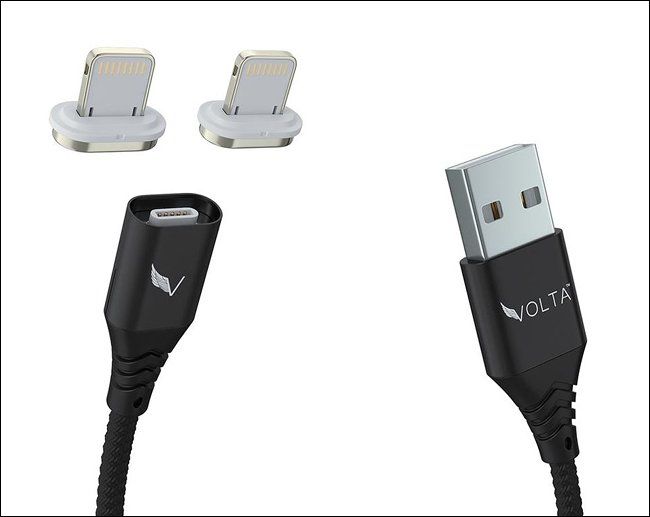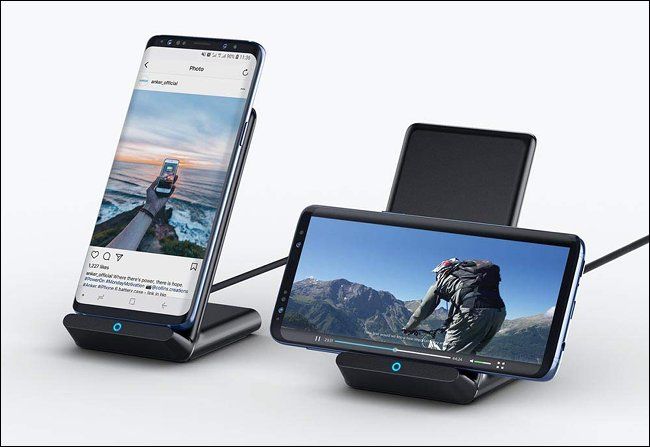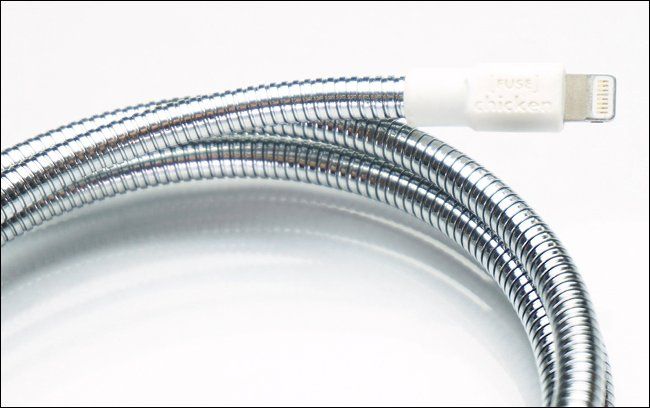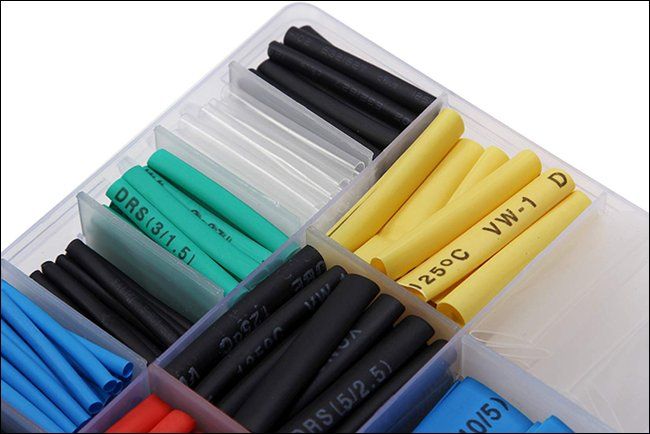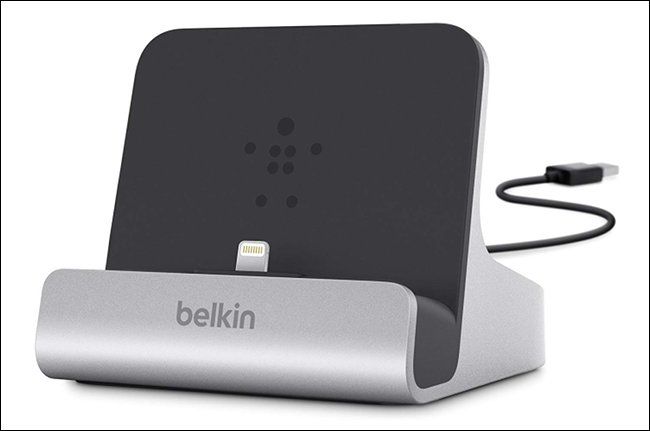Quick Links
Frayed charging cables can be dangerous to use and expensive to replace. Whether you're using a Lightning cable with an iPhone, a USB-C cable with an Android phone, here's how to protect them from breakage.
Taking Care of Your Cables
The best way to stop your cables from breaking is to take proper care of them. In particular, always hold the cable by the plug when removing it from a device or USB port. Suddenly pulling a cable out without doing this will put pressure on the weakest part of the construction, where the cable joins the plug.
In transport, loop your cables and keep them bound with a strap or clip where possible. Make sure you loop your cable the right way by manipulating it with your hands. The cable will naturally coil in a specific manner, which you should always try to replicate. Some cables, like the Anker Powerline+ below, come with a velcro strap for easy transportation and storage. The "roadie wrap" is the best way to wrap your charging cables.
Avoid excessive bending of cables, or wrapping them up too tightly. Bending the cable, particularly at the point where the cable joins the plug, is the leading cause of damage over time. If you can avoid using your device while charging it, you will avoid unnecessarily wear the cable.
You will probably need to change your behavior and break old habits, but your cables will thank you for it. If you instinctively grab your phone in the morning before getting out of bed, take care to unplug the cable first. Laying there in bed with the cable bending back and forth as you roll over isn't ideal. If you're used to throwing your charging cables in a bag for a weekend away, take a second to coil them correctly.
Use Cable Protectors
Cable protectors work by protecting the point at which the cable joins the plastic or metal plug. They should be made of a flexible material like rubber, to allow the cable to flex slightly when pressure is applied. If the cable protector does not flex, it merely moves the point of weakness further up the cable.
You can buy a pack of cable protectors for a few dollars online. The TUDIA KLIP is one of the best solutions for Apple Lightning, iPod, MagSafe, and Apple Watch chargers. For a cheaper product that's compatible with just about any USB charger, check out the Jetec multi-colored spiral protectors or the Nite Ize CordCollar.
If you're feeling crafty, you can add springs to your collars to add some tension and prevent the cable from bending to a critical point. For a more resilient homemade solution, check out the Paracord Cord Reinforcement tutorial on Instructables.
Almost anything that can prevent your cable from excessive bending will help protect it, whether it's a homemade sleeve or a strip of electrical tape.
Prevent Accidents with Magnetic Adapters
While cables wear naturally over time, cable damage is exacerbated by sudden movement. We've all accidentally snagged a charging cable, sending whatever was charging flying across the room. When this happens, the cable usually remains in place.
Magnetic adapters take the approach used in Apple's (now defunct) MagSafe power cables and apply it to just about any device you own. First, place a small magnetic adapter into your device's charging port. This adapter then connects magnetically to a charging cable when required.
Cables no longer get bent out of shape when you accidentally catch your smartphone, since a small amount of force is all it takes to detach the cable safely. You can buy as many adapters as you want, and use the same cable to charge everything. The adapter protrudes slightly from the bottom of your device for easy removal, and it might even help keep your charging port free of lint and other gunk.
Volta is probably the most well-known magnetic charging solution. For just shy of $20 you'll get a Volta 2.0 charging cable and two adapter "tips" to fit Lightning, Micro USB, or USB type C connections. There are also plenty of affordable solutions available on Amazon and other online shopping services.
Keep in mind that you're going to need to stick to a single system (or brand) if you want to share the same charging cable among several devices. You could even add a cable protector to your magnetic charger for an even more durable solution.
Charge (Almost Any Device) Wirelessly
Wireless charging is now widespread in modern smartphones. If you own a recent iPhone or Android device, there's a high probability it can be charged wirelessly. You'll need to purchase a Wireless Qi charger to use it, like this Anker 10W Wireless Charging Stand, which even supports fast charging.
This is one way to beat the broken cable blues. Unfortunately, it prevents you from using your device while charging, but that's a great excuse to switch off and ignore your smartphone for half an hour. Just make sure you buy a wireless charger with a high enough wattage (10W) if you want to make use of fast charging. The iPhone X, XS, XR, and 8 all include wireless charging, but can only charge at a maximum of 7.5W---and, even then, only with specific, Apple-approved wireless chargers.
If your device doesn't natively include wireless charging support, you can add it easily with a cheap Qi receiver. These take the form of thin charging pads that connect to your charging port and stick to the back of your smartphone. Most of them can live under your case, provided your case isn't made of metal.
With a Qi receiver installed, your device will be able to receive a charge from Qi wireless chargers. Your charge speed may limit you compared to native wireless charging, but for around $10 the upgrade is inexpensive enough to justify.
Just make sure you buy the right Qi receiver for your device, whether you have a Lightning port, Micro USB type-A, or USB-C connection.
Invest in One Cable to Rule Them All
Apple's official Lightning cable costs $29 for a 2-meter USB-A to Lightning connector. If you replace one a year, you're paying nearly $90 for three years' worth of iPhone charging. Why not invest more money in a stronger iPhone charging cable that will not only last but also saves you money in the long run?
The Fuse Chicken Titan Plus is a 1.5-meter USB-A to Lightning cable. It is made to Apple's Made for iPhone manufacturing standards, which means it includes data capabilities and can be used as both a charger and sync cable. It's protected by two layers of flexible steel, with sealed aluminum housing on each connection. It's yours for $37.50.
Fuse also produces a range of cables with USB-C and Micro USB connectivity, perfect for Android users. They all ship with a lifetime warranty, but do be aware that all-metal construction results in added weight and reduced flexibility.
Anker's Powerline+ is another highly rated charging cable available in Lightning, Micro USB, and USB-C variations. The cable features an aramid fiber (Kevlar) core and double nylon braiding which Anker claims will last ten times longer than other cables.
You can also find cheaper cables made with aramid fiber (like this Lightning cable and this Micro USB cable) all over shopping sites like Amazon. For best results, combine a tough cable with cable protectors and proper cable care.
Repair Your Cables Early
Frayed cables are dangerous. You're taking risks if you continue to use a charger once it's started to display signs of wear. Not only could you damage whatever you're charging, but you could also receive a nasty shock or start a fire. We'd recommend throwing away damaged cables to be on the safe side.
If you're convinced your cable isn't too severely damaged, or it's just started to show signs of wear without fully exposing the wiring, you may want to repair your cables instead. By far, the best way to do this is by using electrical heat-shrink tubing.
You can pick up a kit of heat shrink tubing for less than $10. These tubes fit over your existing wire, then shrink down to size when direct heat is applied. For fast results use a heat gun, but in many cases, a hairdryer will also work with a little patience. The tubing reduces flexibility somewhat, so these can even pull double duty as cable protectors to prevent future fraying.
Remember: if you're uncomfortable with the state of a cable, cut it up and throw it in the bin.
Charge Your Phone in a Dock
Smartphone docks might be unfashionable, but they serve a purpose. Since the dock doesn't move, they're not as susceptible to the same wear and tear as a standard charging cable. You won't be reading your device in bed, but you also won't be flexing the cable constantly either.
The majority of docks seem aimed at Apple users, like the Belkin ChargeSync. This is probably because a greater percentage of Android devices include wireless charging.
The Future is Wireless
Cables are fragile, and the fully wireless future isn't here quite yet. You don't need to spend a fortune; just make sure you're buying good quality cables by avoiding the cheap and nasty ones. If you're an Apple user, make sure you only buy cables that adhere to Apple's Made for iPhone (MFi) standards.
If your device charges over USB-C, you'll want to be extra vigilant that you choose a safe USB-C cable that won't damage your devices.

